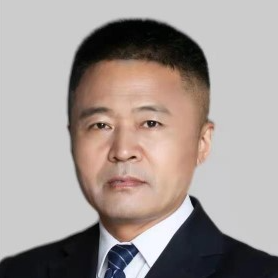Unmanned Marine Vehicles: Navigation, Control and Sensing
A special issue of Journal of Marine Science and Engineering (ISSN 2077-1312). This special issue belongs to the section "Ocean Engineering".
Deadline for manuscript submissions: 30 July 2024 | Viewed by 825
Special Issue Editors
Interests: intelligent control for complex systems; modeling and control of marine vehicles
Special Issues, Collections and Topics in MDPI journals
Interests: robust fault-tolerant control; sliding-mode control; model predictive control; deep learning with an emphasis on applications in marine vehicles
Special Issues, Collections and Topics in MDPI journals
Special Issue Information
Dear Colleagues,
With the rapid development of the successful application of advanced control and artificial intelligence techniques in unmanned marine vehicles, significant progresses have been made in the fields of navigation, control, and sensing. Recent advances in unmanned marine vehicles have demonstrated their great potential to transform our ways of monitoring, intervening, exploring, and utilizing the marine environment, from the sea surface down to the deepest depths and furthest reaches of the oceans.
This Special Issue is seeking high-quality original contributions: technical papers that address the main research challenges related to the navigation, control, and sensing of marine vehicle systems. Papers are invited on topics including (but not limited to) the following:
- The navigation and advanced control of marine vehicle systems;
- The localization and navigation of marine vehicle systems;
- The perception and motion planning of marine vehicle systems;
- The stability and robustness analysis of marine vehicle systems;
- Learning and artificial intelligence (AI) in marine vehicle systems;
- Sensor fusion in autonomous marine vehicle systems;
- The cooperative and coordinated control of autonomous marine vehicle systems;
- Energy and power management in autonomous marine vehicle systems;
- Fault diagnosis and the fault-tolerant control of marine vehicle systems;
- Robust model-predictive control of marine vehicle systems;
- Identification and estimation in autonomous marine vehicle systems;
- Safety and security control of marine vehicle systems;
- Simulations and case studies of applications with autonomous marine vehicle systems.
Prof. Dr. Tieshan Li
Dr. Liying Hao
Guest Editors
Manuscript Submission Information
Manuscripts should be submitted online at www.mdpi.com by registering and logging in to this website. Once you are registered, click here to go to the submission form. Manuscripts can be submitted until the deadline. All submissions that pass pre-check are peer-reviewed. Accepted papers will be published continuously in the journal (as soon as accepted) and will be listed together on the special issue website. Research articles, review articles as well as short communications are invited. For planned papers, a title and short abstract (about 100 words) can be sent to the Editorial Office for announcement on this website.
Submitted manuscripts should not have been published previously, nor be under consideration for publication elsewhere (except conference proceedings papers). All manuscripts are thoroughly refereed through a single-blind peer-review process. A guide for authors and other relevant information for submission of manuscripts is available on the Instructions for Authors page. Journal of Marine Science and Engineering is an international peer-reviewed open access monthly journal published by MDPI.
Please visit the Instructions for Authors page before submitting a manuscript. The Article Processing Charge (APC) for publication in this open access journal is 2600 CHF (Swiss Francs). Submitted papers should be well formatted and use good English. Authors may use MDPI's English editing service prior to publication or during author revisions.
Keywords
- unmanned marine vehicles
- navigation
- control
- sensing






